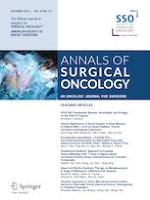Erschienen in:

22.08.2019 | Sarcoma
To Biopsy, or Not to Biopsy: Is There Really a Question?
verfasst von:
Mark Fairweather, MD, Chandrajit P. Raut, MSc
Erschienen in:
Annals of Surgical Oncology
|
Ausgabe 13/2019
Einloggen, um Zugang zu erhalten
Excerpt
Soft tissue sarcomas (STS) represent a diverse group of histologic subtypes, each demonstrating its own unique tumor biology and propensity to recur locally or to metastasize. The retroperitoneum accounts for approximately 15–20% of all STS and about one-third of retroperitoneal masses are STS. As we have learned more about the behavior of retroperitoneal sarcomas (RPS), it has become generally accepted that histologic subtype and grade should determine the treatment algorithm and operative extent. Historically, an open surgical incisional biopsy was the approach of choice for diagnosis of suspected STS. While ensuring adequate tissue for diagnosis, this method is fraught with the potential for significant morbidity. With advances in radiology, the current standard is a percutaneous, image-guided approach. This involves a core-needle biopsy (CNB) using a 12–16 gauge needle that targets the most solid-appearing portion of a mass. A fine-needle aspiration often yields insufficient material to allow accurate diagnosis or distinguish histologic subtypes and should generally be avoided for evaluating a possible STS. The rare example of when a preoperative biopsy may not be warranted is in the example of a well-differentiated liposarcoma (WDLPS) that often demonstrates a characteristic homogeneous fat-dense appearance. However, in light of the recent findings from the European Organization for Research and Treatment of Cancer (EORTC) phase III trial (‘STRASS’), the trend in potential benefit of preoperative radiation for WDLPS would necessitate a preoperative biopsy in order to confirm the diagnosis prior to considering neoadjuvant treatment.
1 …